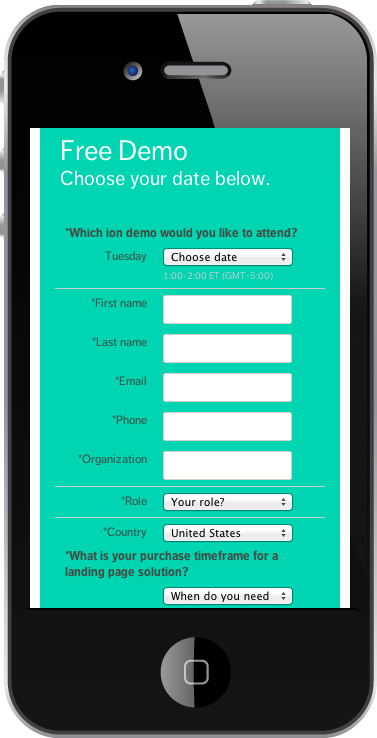 The way people experience and engage on the Internet is changing, and as marketers and advertisers, we need to account for the fact that a larger contingent of our online audiences may interact with our campaigns via mobile devices.
The way people experience and engage on the Internet is changing, and as marketers and advertisers, we need to account for the fact that a larger contingent of our online audiences may interact with our campaigns via mobile devices.
In fact, the "number of smartphone subscribers has increased 29% from a year ago and 99% from two years ago,” according to comScore’s ‘2013 Mobile Future In Focus’ report.
The report also shows that mobile now comprises nearly 40% of time spent online when compared to PCs or laptops. In addition, a recent Google/Nielsen study found that, “39% of mobile searchers are more likely to call when using a mobile device than they would be otherwise.”
How large and qualified this mobile audience is will vary from company to company, and campaign to campaign. The volume of mobile engagement depends on a variety of factors, including geographic target, audience age, product or service, stage of the buying process, and audience need, to name a few.
So, how can you determine if the need and return is there to invest in mobile marketing initiatives, whether it be launching a mobile-focused campaign or developing a responsive design website?
RELATED CLASS: How to Prepare Your Brand for Today's SoLoMo (Social, Local, Mobile) Marketing Environment
Finding the answers to these questions starts with understanding the scope and quality of those mobile audiences your campaigns are engaging right now. Because of the nature of how these mobile audiences interact, you’ll need to make sure your analysis accounts for both online and offline conversions.
Here is a 3-step process on how to use mobile call tracking to help gauge mobile marketing campaign potential.
 1. Capture and Qualify Offline Conversions
1. Capture and Qualify Offline Conversions
With the increased likelihood that mobile audiences are calling, call tracking can capture phone conversions and help qualify each as solid sales opportunities.
Dynamic number insertion, or session-based call tracking, can be set up to show different numbers to mobile audiences that click through to your website, and then attribute any offline conversions back to the campaign source, whether it be a PPC ad, email or organic keyword search.
RELATED CLASS: Fundamentals of Mobile Marketing
Different call tracking features can then be used to determine the quality and sales readiness of the lead, including:
- Call length
- Call recording
- Last web page visited before calling
- Demographic data including name , address, city, zip
2. Compare Performance In a Complete Dashboard
With sales quality phone leads identified, set up integrations to feed this lead data into other tracking and reporting systems, such as Google Analytics and AdWords. By combining this conversion data into other analytics tools, you create a complete campaign performance dashboard.
Use this dashboard to compare the value and quality of mobile traffic and leads to that of desktop and laptop audiences. Some of the questions you’re looking to answer include:
- Are we losing quality lead conversion opportunities because our website isn’t mobile friendly?
- What percentage of campaign-driven traffic is mobile?
- What pages are mobile audiences navigating to and converting from, and how does this differ from desktop/laptop traffic?
- Do mobile audiences take the desired call to action?
3. Justify Mobile Campaign Spend
Use the answers to the questions above to validate the need for mobile marketing campaigns or a mobile-friendly online experience. You should be able to use actual numbers and performance data to justify to management or clients the opportunity cost of doing nothing.
No matter what direction you take with mobile, continue to monitor for changes using both online and offline lead conversion data. A complete lead conversion picture is the only way to confidently make strategic campaign decisions that will directly affect ROI.
Learn how to adapt to mobile and tablet users with responsive design.
Watch The Mobile Web and Responsive Design, and get expert advice for developing your responsive design strategy. Learn the 6 reasons why mobile websites should lead your digital approach, the key steps and tools necessary for following Google's guidance on using responsive design, and when you should create special mobile sites, or use your core site for mobile traffic. Get instant access to this class now.